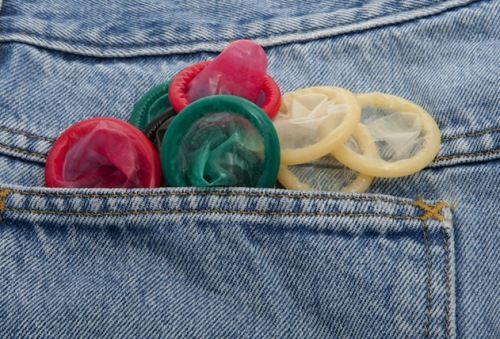Sexual Orientation
Bisexuality: Out of the Closet at Last?
We understand less about the foundations of sexual identity than we think.
Posted March 21, 2014

First came female bisexuality. "Lesbians until graduation" on college campuses. Female celebrities hopscotching between male and female partners. And sex researcher Lisa Diamond's book Sexual Fluidity, with its message that for many women choice of gender in a partner can be "fluid."
Male bisexuality has been more difficult to coax out of the closet. Male bisexuals have faced mistrust from straight women, who like Carrie Bradshaw in Sex and the City feared being just "a layover on the way to Gaytown." And they've been accused in gay circles of being too fond of their heterosexual privileges to just come out as gay.
But male bisexuality's hour seems to have come at last. Northwestern University sex researcher Michael Bailey and coworkers finally confirmed the existence of male bisexuality in a research laboratory in 2011—producing a collective sigh of relief from bisexuals everywhere, as we discussed in "Why is Male Bisexuality Like the Higgs Boson?"
An earlier study by Bailey's team in 2005 had concluded that most self-identified male bisexuals had laboratory measures of arousability similar to gay men. But the later 2011 study had more stringent subject selection: to be a participant, you not only had to have had sex with at least two men and two women, you also had to have had romantic relationships with both a man and a woman. These people were really bi, and their responses to erotica confirmed it.
According to a new article to be published in this week's New York Times Magazine, "The Scientific Quest to Prove Bisexuality Exists," the fact that Bailey mounted yet another attempt to find the Higgs Boson of male bisexuality was not an accident. Bailey was given research support by the American Institute of Bisexuality (A.I.B.), an organization devoted to bisexuality education, research, training, and media outreach. According to the New York Times Magazine article, female "sexual fluidity" researcher Lisa Diamond (mentioned above) has also received funding from A.I.B.
The founder of A.I.B. died in 2006, leaving the organization with a nearly $17 million endowment. That's a lot of money in the world of academic sex research, where professors have traditionally taken vows of poverty and occupied offices in trailers on the edge of campus.
This new funding for cutting-edge sex research certainly helped coax male bisexuality out of the closet. That's a huge deal. Men in heterosexual relationships have historically had to keep their bisexuality carefully hidden. Maybe in the future male bisexuality will be accorded the same respect as its female counterpart.
But there's something bigger afoot here. As many people have noted, the question "Why are some people gay?" is perhaps less interesting than "Why are most people straight?" The researchers mentioned in the New York Times Magazine article didn't stop after confirming that bisexuality exists. Some are continuing to apply the same new techniques to examine the underpinnings of conventional homosexuality and heterosexuality as well.
We may be seeing the beginnings of a new era in sex research—one that will challenge sexual categories that have been around forever. Next time, we'll take a look at what some of this new research is showing.
Stay tuned.
Copyright © Stephen Snyder, MD 2014
www.sexualityresource.com New York City
…and see also…


